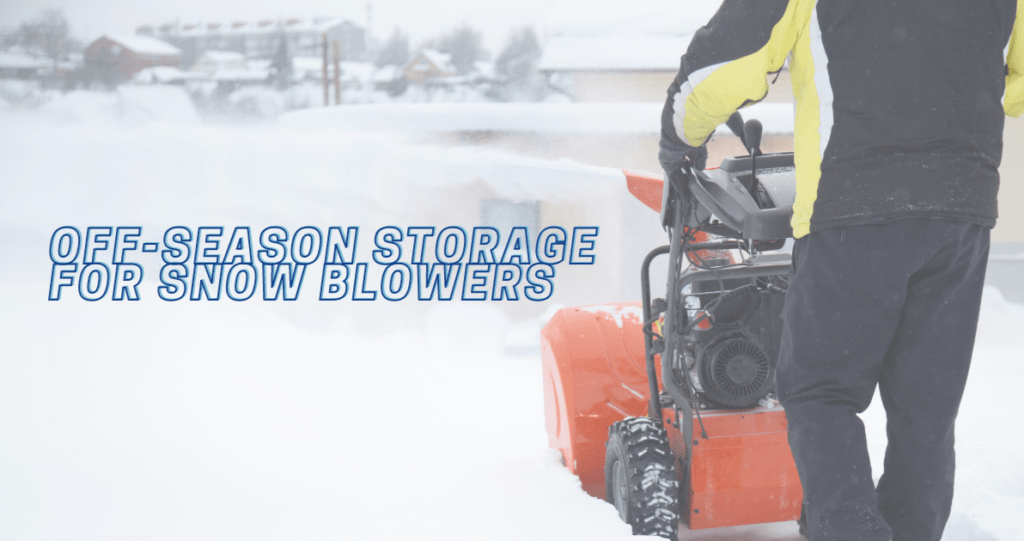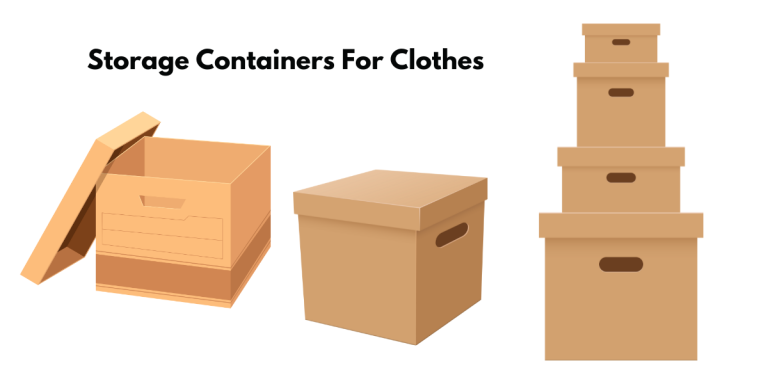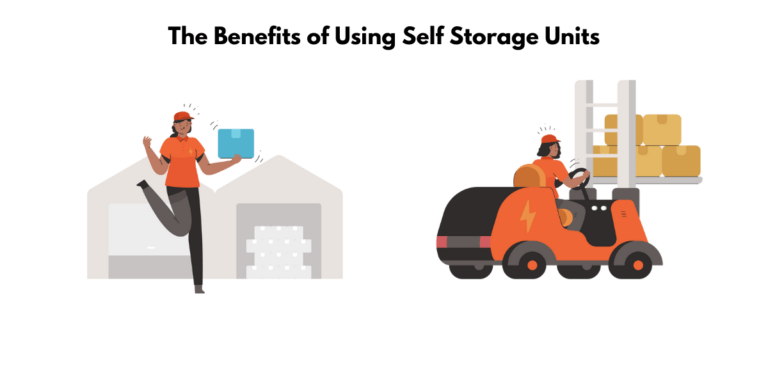Snow Blower Storage: Tips on how to prepare your snow blower for long-term storage
How to prepare for long-term snow blower storage
A snow blower is a machine that can move and throw small amounts of snow, ice, or other granular material. The primary function of the machine, in terms of snow removal, is to clear paths and driveways of these materials.
There are a number of ways to store your snow blower for the winter. If you have room in your garage, feel free to park it there over the winter months if It’s not too heavy for the garage floor. Another option is to use a snow blower storage bag or protective cover, which can be purchased online or from your local home improvement store.
If you do not have room for your snow blower in the garage, you can use a self-storage facility. You may also find that if it’s just an occasional machine to help with the light work, you can simply store it in the basement or other non-heated area, which will typically be cooler.
There are many storage options for snow blowers, but make sure to do your research before deciding on the best option for you.
There are many different types of snow blowers on the market. Each type has its own pros and cons for storage, but one thing is true: if you want to store it for a long time, you’ll need to prepare it for storage.
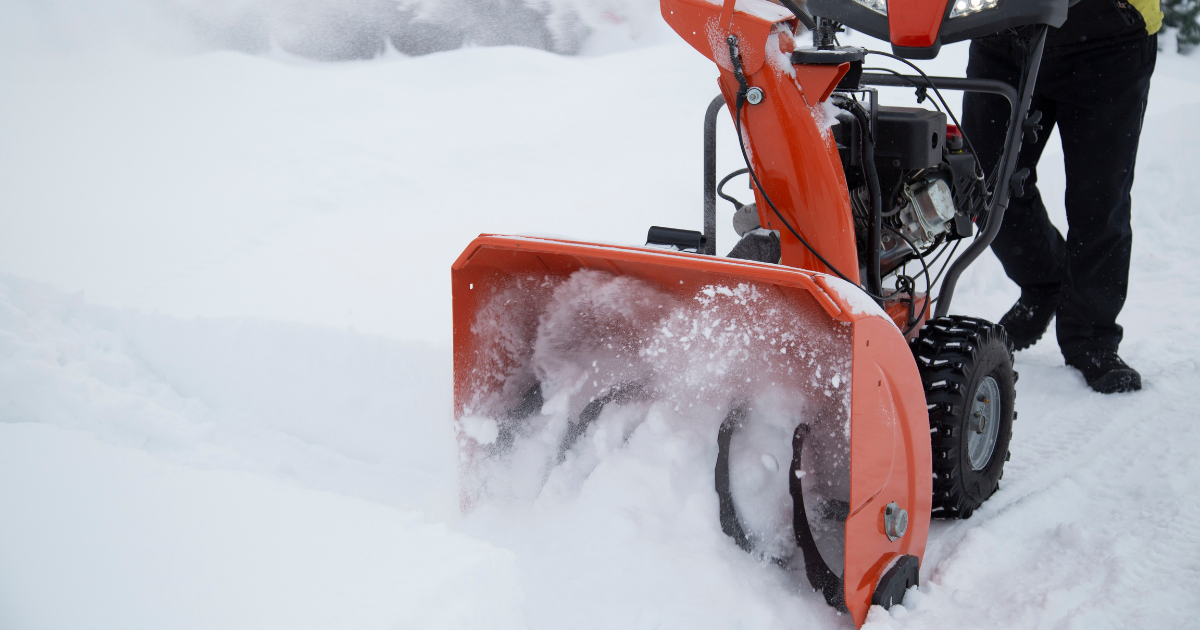
Snow blower storage prep
If you want your snow blower to last longer than a few years, there are some things that should be done before storage and when it is time to bring the snow blower out again.
Drain the fuel
Drain the fuel from your snow blower before storing it. If you want to store a snow blower for more than 30 days, or if you live in an area with severe winter weather conditions and prolonged periods of freezing, it is best to do this step before storing.
Follow the instructions in your snow blower’s operator manual to drain the fuel tanks and ensure proper drainage. Drainage is especially important for gas-powered blowers, as the fuel breaks down over time into sludge that can build up inside.
Remove the spark plug and store it in a separate location, preferably with some oil to prevent rust. It is also advisable to place cotton balls soaked in fuel down the exhaust pipe before storing your snow blower.
Change engine oil
Change engine oil while the snow blower is still warm. Make sure to change the oil according to the manufacturer’s instructions and remove any extra oil by draining it out of the snow blower. Before you change the engine oil, it is a good idea to drain the fuel system of old or dirty gasoline.
Oil is a lubricant that helps protect your engine from wear and tear. If you neglect to change the oil in your snow blower, it can cause problems such as sludge build-up or corrosion on the engine shaft.
Seal and protect the engine
The sealant is used to prevent the engine from getting dirty and slippery. It also seals any leaks that may form in your car’s undercarriage, preventing costly repairs. Lastly, it protects your engine from corrosion.
Long-term storage can be a challenge, but there are some things that you can do to make the process easier. First, seal and protect the engine from any moisture getting inside by checking if the spark plug is properly sealed. This will ensure that your snow blower stays in good working condition for as long as possible.
The engine should be lubricated before storage in order to prevent rust. The cylinder wall and piston need to be protected when the snow blower is stored for a long period of time or when it will not run again soon. Make sure that you protect the engine from rusting with a high-quality product like CRC Engine Guard or Gunkote.
The engine is one of the most important parts of a snow blower, and it’s easy for dirt, grime, and moisture to get into it. Therefore, you should take extra care when storing your snow blower so that you can maintain its performance in the future.
Use a snow blower cover
Snow blowers are a big investment for many people, so it’s important to take care of them properly. Cover your snow blower with an appropriate cover when storing the equipment outside in order to protect it from weather and other environmental damages, making it last for years.
Snow blower covers are used to protect your snow blower from the elements. They also help you avoid corrosion and rusting of metal parts on your machine, which can lead to expensive repairs. Snow blower covers are not designed to protect the engine from exposure to rain or snow.
A snow blower cover is a sturdy, waterproof protective covering for the engine and blower on your snow blower. It will keep out debris that may cause clogs or damage to your machine. You should try to keep your snow blower indoors or under a roof when not in use, but if you have no choice but to store it outside, then the cover is an excellent way of providing some protection. It will keep it clean and safe from weather conditions, such as rain or sun exposure.
Snow blowers can be an excellent tool for getting rid of winter’s most dreaded task, but they can also be a time-consuming and challenging chore. Snow blowers range in price from inexpensive to expensive, depending on the size of your yard and how often you use it.
Add fuel stabilizer
By the time comes to take your snow blower out of storage before adding fuel to a snow blower gas can, it is essential to add a stabilizer. Gas cans are more likely to explode if they contain too much ethanol or gasoline without the proper amount of stabilizer added into the mixture. It is recommended to add some fuel stabilizer so that the fuel will not break down and clog the engine. This prevents the engine from becoming a gunky, soupy mess and helps avoid any problems so you can enjoy your machine for years to come!
Fuel stabilizers can absorb moisture in the tank before gasoline has a chance to and oxidizes, which prevents damage from occurring. The additive can be found at most gas stations and should only cost about $2-$3 for a bottle that will treat 10 gallons of fuel. The stabilizer needs to be added BEFORE the fuel has been put into your machine so it can work properly.
Tip:
Treating your fuel can help keep the machine from becoming gunky and soupy before it is put away. It only costs a few dollars for some stabilizer, so why not take the time to do it?
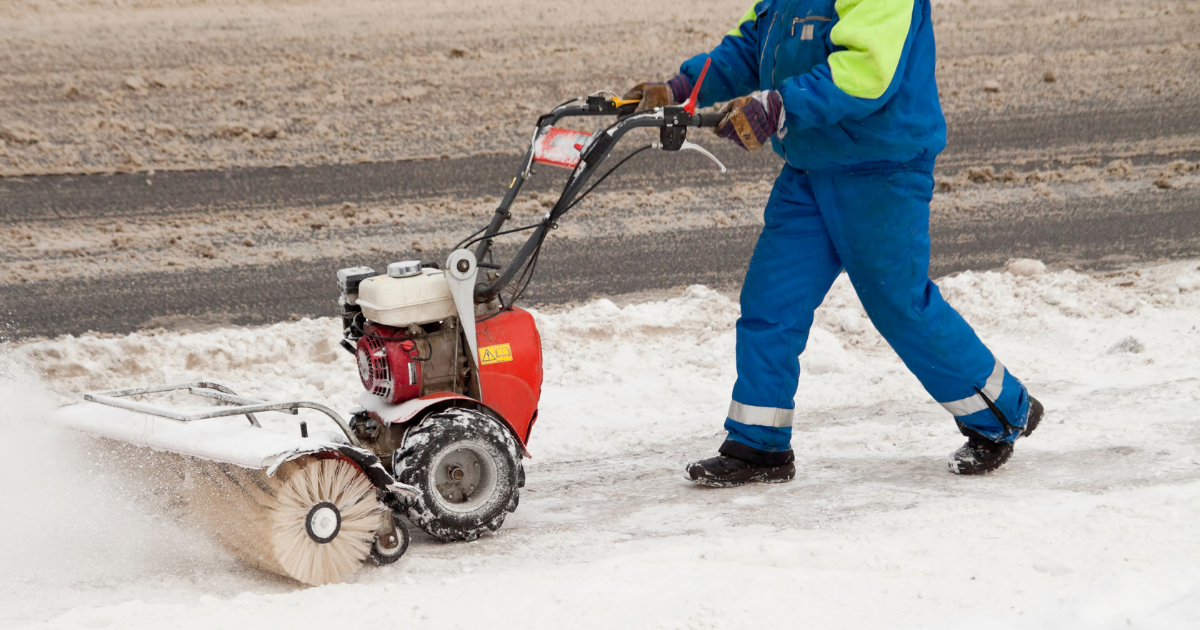
What to look for in a storage unit for a snow blower
The best type of storage unit for a snow blower is one that is located outside. This will allow the machine to get the most use out of it while also protecting it from theft. Remember to make sure that the storage shed is large enough for your snow blower. Here are the qualifications you should look for in a storage unit to ensure the quality of your snow blower during long-term storage:
Size/location
The storage unit needs to be large enough to accommodate the snow blower. A small storage unit is convenient because it allows for easy access to the snow blower. Furthermore, most storage units are located close by, and there’s not a need to drive long distances in order to store one.
If you are looking for a storage unit, be sure to check the size and location. It is also important to note that there might not be enough space in your garage or driveway once you have finished storing it.
When you are looking for the best storage unit, consider what size it is and where it will be located. Also, make sure that there is enough room to store your snow blower as well as fuel or ice melt.
Ease of access
If you’re looking for a storage unit to put your snow blower in, make sure it’s easy to access and doesn’t require any heavy lifting.
Some storage units have a lock on the door that is difficult to open. In order for you to extract your snow blower from such a unit, it would be necessary to break the lock and risk getting arrested in some jurisdictions.
Price
Snow blower sheds are usually priced according to size. A snow blower shed should have a sturdy frame, high walls, and enough room for your snowblower’s wheels to turn in.
When looking for a storage unit, you should consider the reputation of the facility and the quality of service that they provide. These are some of the defining factors that should be the most important in your search. Warranty length is also an indicator that will help in determining the price range.
Security
When storing your snow blower for the winter, you should look for a storage unit that has security. You also need to consider if the unit will have enough room so that it’s not in close proximity to other items or people.
If you choose to buy an outdoor shed, you should look for one that has a lock. It is also important to think about what kind of storage unit will work best with your snow blower. Sheds made out of resin plastic are not the best option because they can be cut with a razor knife if thieves are able to get in.
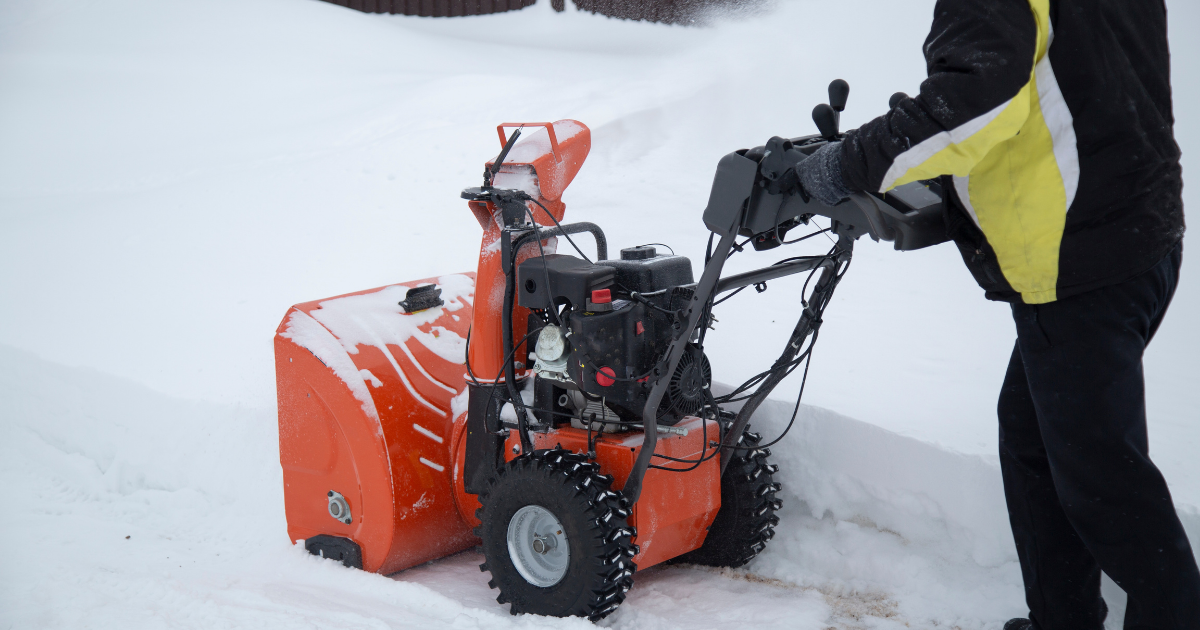
FAQs
FAQs are important to know before you store a snow blower. There are some basic questions that should be asked when looking into the long-term storage of a snow blower:
Can you store snowblower in a garage?
Yes, you can store your snow blower in the garage. A few tips for storing your snow blower in a garage are to use an airtight container with a lid and seal off the garage. This will keep the blower from getting wet and moldy in case of a leak or other issue with your roof.
The snow blower should be covered with a mat in order to keep it safe. It should be kept uncovered during the spring, but this can be done by covering the snowblower with a tarp or blanket for protection from rain, dust, and dirt.
You can store a snowblower in a garage. Snow blowers have been traditionally stored outside until recently when storage units became popular alternatives for homeowners who had limited space to work with.
The manual should be read carefully to check the product-specific instructions. There are a few different types of snow blower accessories, including a chute and auger. The owner’s manual can also provide useful information about how to use them properly as well as safety guidelines for using your machine in general.
How long can I leave gas in my snowblower?
Gasoline is a highly volatile substance. As such, it can evaporate quickly depending on the conditions in which it resides. The more heat an area has, and the longer gasoline sits, there is a higher probability that the gasoline will evaporate. It is best to use gas as soon as possible after purchase, and if you know you won’t be using it for a while, store it properly.
The fuel stabilizer prevents the fuel from degrading over time. The snow blower can be safely put in storage after adding the fuel stabilizer to prevent any bad smells or problems caused by gas that has degraded.
It is highly recommended to drain the remaining gas from your snow blower before storing it. If you’ve used gasoline straight from a pump, then wait 24 hours and drain the fuel into a container that can be stored safely outside of your home or building.
It is important to note that ethanol mixes with water in gas tanks. This can result in clogs and the need for expensive repairs. It is recommended to drain snow blowers of gas after the snow has melted or if they are stored outside during warmer months, as it will prevent any issues from occurring down the line.
Snow blowers are designed with a gas tank that is large enough to last for up to five hours. However, the type of fuel used in snowblowers can affect how long you can store your machine before it needs refueling. It is also of the utmost importance that you learn how to store your snow blower properly to avoid damaging it.
Do I need to change snow blower oil every year?
No, it is not necessary to change snowblower oil every year. Typically the lifespan of a snow blower’s engine will vary depending on usage and maintenance, but most engines can last anywhere from 3 to 10 years. The oil in the engine should be changed every year regardless of the mileage because it will begin to degrade over time and damage your snow blower’s engine.
The storage of your snow blower is also important. The first step you should take before putting the machine away for the winter season is to clean out any particles or debris that may have accumulated. You should also check your air filter for debris and replace it if necessary. If the engine is gas-powered, you need to drain all of the fuel from it as well–another important step.
If you live in a cold area, storing your snow blower inside is the best option. A garage will work too, but make sure it’s sealed properly to keep out moisture and other elements that can cause damage to your machine.
There are three grades of snowblower oil: standard, premium, and synthetic. The best option will depend on your specific device as well as how much snow you typically encounter in an average winter season. You can use the fuel stabilizer option, which prevents airflow and moisture build-up from occurring in your tank, but this will lower the performance of the engine slightly. Alternatively, you could shut off your shutoff valve and run it dry before using it for about five minutes so any water builds up won’t get in the carburetor.
Can I store a snow blower outside?
Yes, it is possible to store a snow blower outside. It can be stored in the garage or shed so long as you have access to an electrical outlet or an extension cord if you have an electric snow blower and the space isn’t too tight. There are some tips to follow when storing the machine outside, including keeping it covered and clearing snow off of it before you store it so that any moisture won’t accumulate on the engine or motor. If you don’t have a garage or shed, the snow blower can be stored outside on the level ground. Cover it with a tarp and make sure to clear off any excess snow before storing it.
To store your snow blower outside, make sure to clear any excess snow off the engine before storing it and cover it with a tarp.

